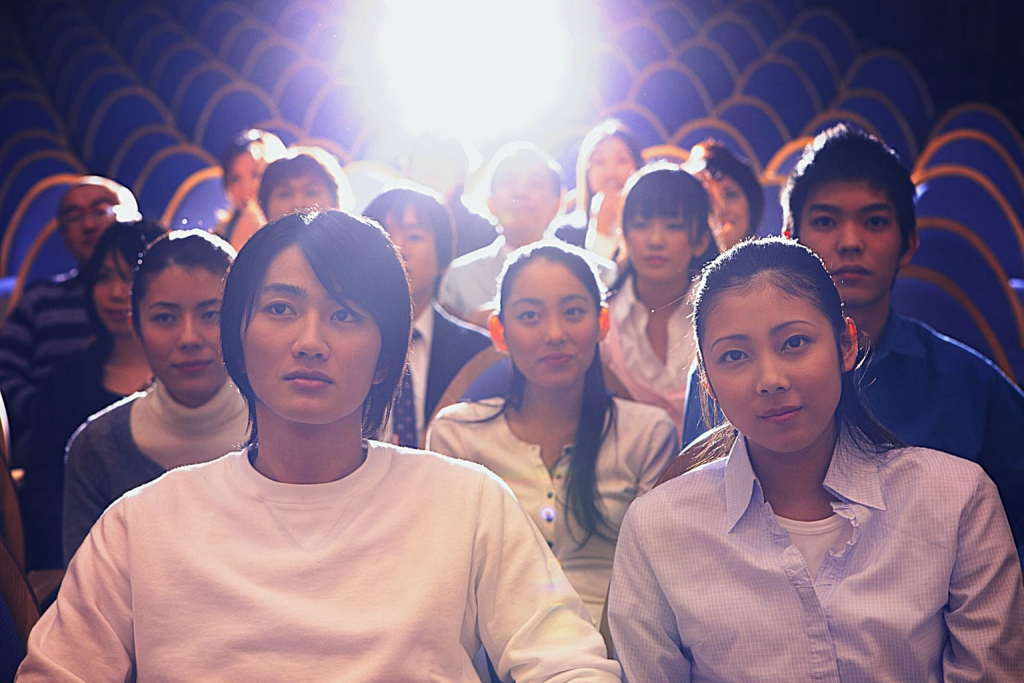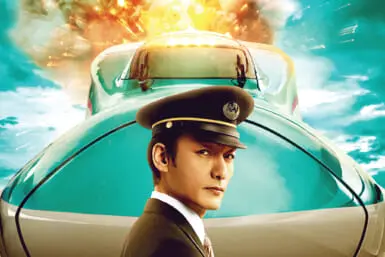It’s tough to encapsulate all the intricacies of Japan in one film, especially one made by Hollywood producers. These five movies seemed to have got some things down to a tee and others, horribly wrong.
1. Lost in Translation (2003)
A mesmerizing take on what is really just washed-up actor Bob Harris (Bill Murray) feathering out a mid-life crisis in Tokyo, this film captures the oftentimes confusing essence of Japan rather poignantly. Estranged but kindred spirits, Bob and Charlotte (Scarlett Johansson) make a vow to never come back to this “strange place,” even though it is this whirlwind city in which they’re finding themselves and falling in love. Charlotte even tells him she “felt nothing” when visiting a Kyoto shrine, which encapsulates Japan’s impossibly impenetrable culture if you’re not from here. Her moping around while her husband is at work irks me, though, since Tokyo is one of the easiest places to explore solo and there really is so much to do other than stare dejectedly at chanting monks. Still, the movie was shot entirely in Japan and so the scenery you see is authentic; the sparkly skyline from the Park Hyatt Hotel, the expat photographers, the karaoke in the glass booth overlooking the Shinjuku streets, the wonderfully intimate and surreal party scenes – this is all quintessential stuff. Oh, and Suntory Whisky really is a big deal here, as well.
Cultural Accuracy: 85%
2. Austin Powers in Goldmember (2002)
I’ve got to give my boyfriend and his love for slapstick comedy credit for this gem. I’d never seen the Austin Powers films before, but when I first told him about this article, I was advised that some scenes from this film were possibly shot in Japan. Turns out the movie was filmed against a very obvious, very fake backdrop of Tokyo with condensed, stereotypical pop icons like Pokemon, Sanrio, and a plastic Godzilla statue. Roboto Industries – whose boss is named purely to give Powers the chance to say “Domo arigato Mr Roboto” – has a window view of giant Mt Fuji background, which, as any Tokyoite will know, you can only see as a tiny stub from certain viewpoints and only on a clear day. What annoyed me most of all was the portrayal of Japanese school girls “Fook Yu” and “Fook Mi” (much to Powers’ delight) because first of all, gross, and second of all, that’s not even how Japanese phonetics sound, yo.
There are two things this terrible, terrible film got right though. Number one is that the Sumo Wrestling scene really is penetrable by foreigners; maybe not as uniquely grotesque as Scottish “Fat Bastard,” though, but out of 700 sumos in Japan today about 200 of them are from different countries originally. Number two is the scene of Powers peeing behind a statue of a peeing boy to remain inconspicuous; whilst the scene was nonsense, a statue like this really does exist in Tokyo. It’s called The Little Peeing Monk and can be found at platform 3 and 4 in Hamamatsucho Station. Still, I can’t help but think that if it weren’t for this article I would have 1h 34 min of my life back…
Cultural Accuracy: 20%
3. Kill Bill (2003)
Tarantino’s fourth film is still considered one of the most violent films Hollywood has ever released, and rightly so. But other than all the chopped off limbs and buckets of spurting blood, it’s also beautifully aesthetic and seems to… er, hit the nail on the head when it comes to showcasing Japan’s charm. Although some of the locations are actually fake sets built in Beijing Film Studios, the designers still seem to capture the spirit of Japanese decor and way of life. The most unrealistic thing they portray about Japan is probably when The Bride (Uma Therman) heads off to a sushi shop in Okinawa to acquire her top of the range sword, and Hatori Hanzo (Sonny Chiba) tells her his English is very good. Actually, most Japanese people are self-deprecating when it comes to their English speaking skills, even when they tell you your own, dismally limited Japanese is “jouzu desune!”
Cultural Accuracy: 70%
4. Fast and Furious: Tokyo Drift (2006)
Rotten Tomatoes was pretty nice to give this film a whopping 37%. Despite its objectifying and misrepresentation of women, it’s awful in every other way, too. It’s clear it was filmed in Los Angeles with its tinny replicas and traditional “Yakuza” gang speaking with American-English accents. It makes Japan look exceptionally international, in fact, with kids like Twinkie (Bow Wow) and Australian Neela (Nathalie Kelley) almost running the show. No idea why they didn’t choose a Japanese girl to play the leading female, but hey, this movie really wasn’t trying to represent Japanese people at all — even most of the Japanese girls in the background are western, and you don’t even have to look too closely to tell. The film also makes Japanese students out to be aggressive, and bold in their fashion and hairstyles – when in reality the high school kids here are entirely disciplined, mostly respectful and typically wearing uniforms.
At least the film plays tribute to the illegal drifting scene that is, or at least was, a very big part of undercover Japan. Even I sometimes hear screeching cars at 3am in the morning from my own apartment, and I live in Japanese suburbia. I never see those sleek and flashy racing cars about though, not even in the city hubs. Oh – one thing they did capture well is the compulsory wearing of “uwabaki” (those white, ballet-looking shoes) at all schools everywhere. As an English teacher I too have a pair. But unashamedly so — they’re comfy as heck!
Cultural Accuracy: 12% (for the shoes)
5. The Ramen Girl (2008)
A widely underrated film, and not just because I see myself represented by blonde, directionless Abby (Brittany Murphy), but this movie remains artistically obscure whilst still painting a fairly realistic portrait of Tokyo today. Of course, most Westerners who come to Japan fall in love with ramen, and although this film is a bit ‘magically realist’ in how it shows the emotions of the ramen chef is passed on to those who eat his broth, it really does show the heartiness and warmth of this special dish; and how much of a big deal it is in Japanese culture, as well. When passers-by gasp at Abby in her towel, or are shocked to their core whenever she goes in for a hug, this is pretty much the reaction you as a Westerner would receive. Abby getting by without understanding much Japanese is also accurate; not too many people here are like grumpy Maezumi (Toshiyuki Nishida) afterall, and you’ll find they often accommodate westerners as much as they can. Some of my own western friends get by with knowing only “sumimasen” and “daijobu” – it’s pretty impressive to be honest. The film also does a great job of highlighting the contrast between western and Japanese work culture — when love interest Toshi (Sohee Park) tells her he wanted to be a musician but his parents wanted him to become a ‘salaryman’ instead; and also when he says he has no choice but to go where his work sends him, this is indeed true for most Japanese youth – you listen to your parents and you do what your boss says. And to deal with the pressure, you drink. Gretchen, the Southern prostitute (and only unrealistic character) somehow says it the best – “the only way to survive living in this country is to do what everyone else does… drink.” So kanpai to that, I guess!
Cultural Accuracy: 80%
Any movies you’d wish to add to this list? Let us know!









